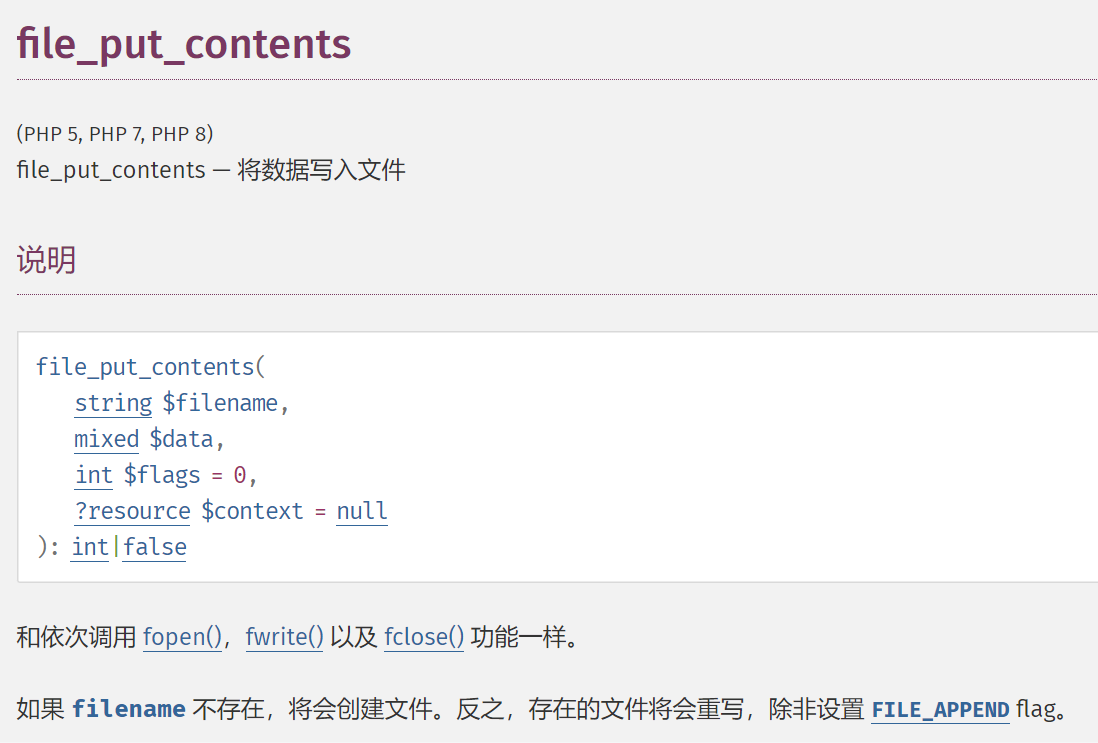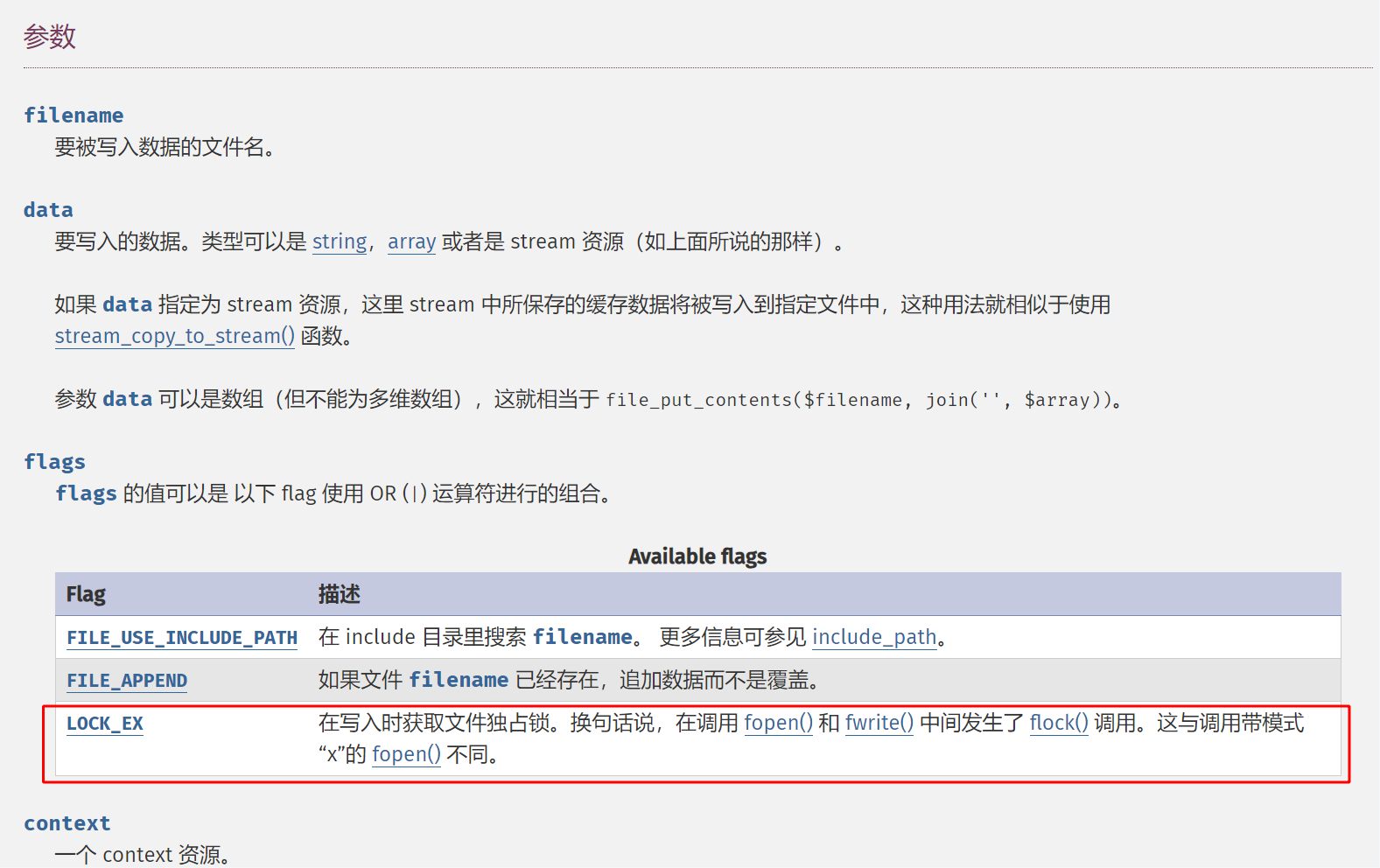在 driver 為 local 時,Storage::append()在高并發下,會存在丟失數據問題,文件被覆寫,而非尾部添加,如果明確是本地文件操作,像日志寫入,建議使用 Illuminate\Filesystem\Filesystem或者php原生方法file_put_content(),通過 storage_path() app_path() public_path() 等方法也能達到類似效果。
源碼 分析:
Storage::append()在driver為local時,調用的是vendor/laravel/framework/src/Illuminate/Filesystem/FilesystemAdapter.php提供的方法,那么其中定義的append()是這樣的:
/*** Append to a file.** @param string $path* @param string $data* @param string $separator* @return int*/
public function append($path, $data, $separator = PHP_EOL)
{if ($this->exists($path)) {return $this->put($path, $this->get($path).$separator.$data);}return $this->put($path, $data);
}
可以明顯的看出這里的 append方法是將文件讀出來拼接再寫入的,那么當文件非常大時,io 消耗和內存消耗肯定會存在問題
- 那么看看
Filesystem的append
/*** Append to a file.** @param string $path* @param string $data* @return int*/
public function append($path, $data)
{return file_put_contents($path, $data, FILE_APPEND);
}
可以看到這里是調用的 php原生方法 file_put_contents(),那么為什么這個原生方法不會有問題?
file_put_contents()的實現
php 官方文檔在介紹 file_put_contents()時是這樣描述的:

可以看到,它也并沒有調用 php 在應對高并發時的應對函數 flock()

那么當使用 FILE_APPEND模式時,php 是如何操作的,我們注意到在描述 fwirte()時,特別標注了 可安全用于二進制對象

那么它的含義是什么?

看到這里,也明白了 fwrite是能保證在追加模式下的多進程調用都寫入到文件尾部
總結:php_put_contents在使用追加模式時,其實是fwrite()函數在追加模式下能保證文件安全的都實現內容追加到尾部,php 的 fwrite 調用的是系統的 write() 并使用參數 O_APPEND

單例模式)




——javasctipt 介紹)

)


代碼實踐 -計算機視覺-49風格遷移)





丨京東API實時接口指南)

)
